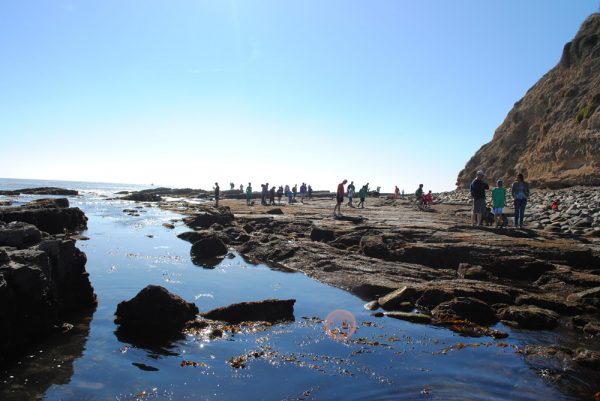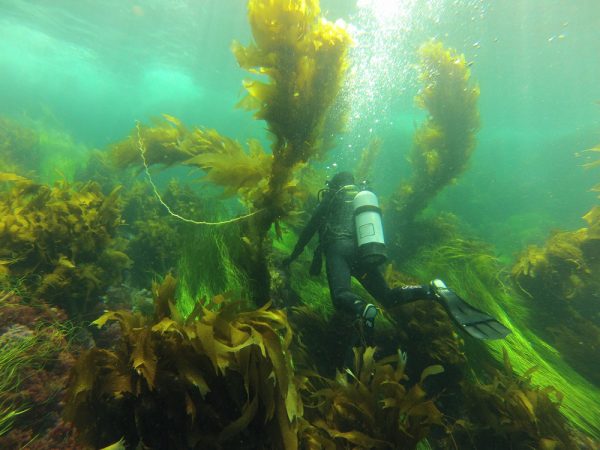By Victoria Kertz | NB Indy
Marine protections imposed five years ago along the Southern California coast reveal no consistent region-wide “abundance trends” or extinctions for any species, says a report released this week.
The data will be presented to the state Fish and Game Commission on April 26 when it reviews the south coast marine protected areas from Point Conception in Santa Barbara County to California’s border with Mexico. The restrictions imposed in 2012 banned fishing offshore Laguna Beach and increased shoreline protections north to Crystal Cove and south to Dana Point, a hot spot for recreation, fishing, commerce and ocean related tourism.

The State of the California South Coast will also be shared with the public in San Clemente on Thursday, March 23, from 5-7 p.m. at the Holiday Inn Express, 35 Via Pico Plaza. The 64-page report establishes a benchmark for what the mandatory protections accomplished in protected areas. The report refers to the findings as “baseline monitoring,” and quantifies little progress.
“The South Coast baseline study period included two years of record-breaking high ocean temperatures,” said a statement from Tom Maloney, executive director of Ocean Science Trust and a contributor to the report. “Climate change already has hit California’s coast, and researchers are seeing marine plants and animals moving north in search of cooler waters. This report creates an important benchmark to help state resource managers make informed decisions that support ocean health.”
The South Coast region spans 2,351 square miles of state waters and extends three nautical miles offshore in some areas and includes portions of the Channel Islands. Research was a challenge and the report itself admits that “ecosystems change over time.”
In Orange County, rocky intertidal ecosystems, or tide pools, cover a quarter of the South Coast region. The report notes a varying range of species in tide pools by locale and by water temperature. Few specifics are made about tidal areas, although the report notes that the population of some species, like the owl limpet, was smaller at sites frequented by beach goers, regardless of whether the sites were inside or outside an MPA.
Marine biologist Nancy Caruso, of Garden Grove, who was not involved with the report’s documentation, echoed this finding. “Remote, rarely visited tide pools are thriving with or without protections,” she said, “but the rest of them are not.” She said that human visitors at tide pools contribute to their decline, without a doubt.
She noted that abalone suffered significantly in recent years. Even after protections made it illegal to take them from the ocean, warmer than normal waters caused them to either die or become so frail, that they no longer reproduced, she said. They thrive in colder waters, as does their food of choice, giant kelp. After a cold winter, Caruso is hopeful.
Abalone numbers are not included in the report, although the species is mentioned as a topic of study in the Channel Islands.
Since marine restrictions were imposed, Sandy Dildine, an undersea photographer and tide pool educator for the Laguna Ocean Foundation, said tide pools are “getting a little better.” Longtime tidal residents like urchin and anemone are hard to find these days, said Dildine, blaming the warm ocean temperatures of the last two years. Dildine is also unaffiliated with the report.
The report mentions wasting sea star syndrome, which nearly exterminated sea stars on the entire west coast in 2014. Juvenile sea stars have been spotted in greater numbers, according to the report, but Dildine says she hasn’t seen many this year. Both in tide pools and in her snorkeling expeditions, she said giant pink sea stars and knobby sea stars of deeper waters are only seen “here and there.”

Both observers and the document agree that the California spiny lobster numbers are on the rise. “It bounced back almost immediately after the protections went into place,” Dildine recalls.
The report found that lobsters in the northern part of the South Coast region tend to be larger than their southern counterparts, but not as abundant.
Kelp forests in both deep and shallow waters also appear to be growing. Giant kelp is now visible at the surface, according to both Dildine and Caruso. “All species of seaweeds and kelp seem to be rebounding,” Dildine stated.
The report was compiled by the state Department of Fish and Wildlife, the California Ocean Science Trust, and the California Ocean Protection Council, along with the help of more than 40 collaborators around the region.
Omitted from the report was the recent invasion of sargassum horneri, a non-native seaweed that completely covers and smothers the tidal area it inhabits. Thought to have come from ships arriving in the Port of Los Angeles, the brown seaweed cannot be removed in a protected area.
“Everything is protected” in a marine reserve, Dildine lamented, “even if it is non-native.”
Biodiversity, or richness in the variety of species, is higher in places that have had marine protection for a longer period of time, such as the Channel Islands, the report says. An exception to this was Laguna Beach, where a fishing ban was imposed five years ago. It was the only place during the five-year study where California tonguefish and barred sand bass were observed, the report says.
Only time will tell, Caruso said. “Five years is too soon. We’re going to need another 20 years to really see a difference.”





[…] already knew before having it confirmed by the Indy’s “Marine Protections Show Little Impact” that the marine protection put in place five years ago did zilch. Critics believe the money […]
[…] in places that have had marine protection for a longer period of time, such as the Channel Islands, the report says. An exception to this was Laguna Beach, where a fishing ban was imposed five years ago. It was the […]
[…] read with some interest Victoria Kertz’s article “Marine Protections Show Little Impact,” March 17 […]
Just went freediving in Crescent Bay in Laguna Beach yesterday (Sept 2019) for the first time since probably 2014 and the number and size of fish is easily 10x what it was before the fishing ban. I should know because I used to spear fish there with a polespear. Really amazing to see the transformation.